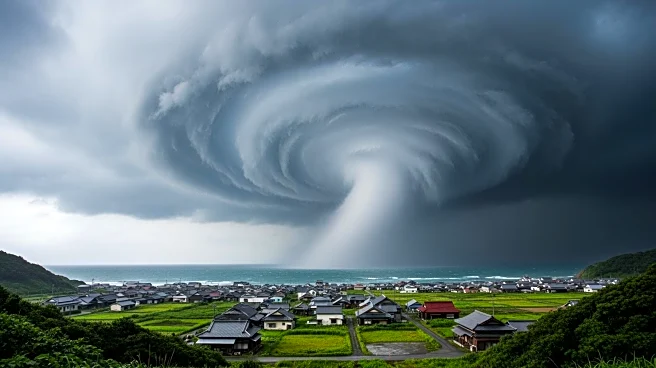What's Happening?
Japanese authorities have issued a tsunami alert for the northeast region following a 6.7 magnitude earthquake in the Pacific Ocean. The earthquake struck at a depth of approximately 10 kilometers, causing
temporary disruptions to bullet train services and power outages. The Japan Meteorological Agency warned that tsunamis of up to 1 meter could impact the Iwate Prefecture, with minor sea level rises expected in surrounding areas. The earthquake measured 4 on Japan's Shindo scale, indicating significant shaking.
Why It's Important?
Japan's location on the Pacific's 'ring of fire' makes it particularly vulnerable to earthquakes and tsunamis. The country's complex coastline increases the risk of tsunami damage, as evidenced by the devastating 2011 earthquake and tsunami that caused significant loss of life and economic damage. The current alert serves as a reminder of the ongoing threat posed by natural disasters in the region and the importance of preparedness and response strategies to mitigate their impact.
What's Next?
Authorities are closely monitoring the situation and advising residents in affected areas to remain vigilant. Emergency services are on standby to respond to any potential damage or casualties. The government may review and update its disaster preparedness plans to ensure effective response to future events. The international community may also offer support and expertise in disaster management and recovery efforts.
Beyond the Headlines
The earthquake and tsunami alert highlight the broader challenges of living in a region prone to natural disasters. It underscores the need for robust infrastructure and community resilience to withstand such events. Additionally, the situation may prompt discussions on climate change and its potential impact on the frequency and severity of natural disasters, influencing policy decisions on environmental protection and disaster risk reduction.












